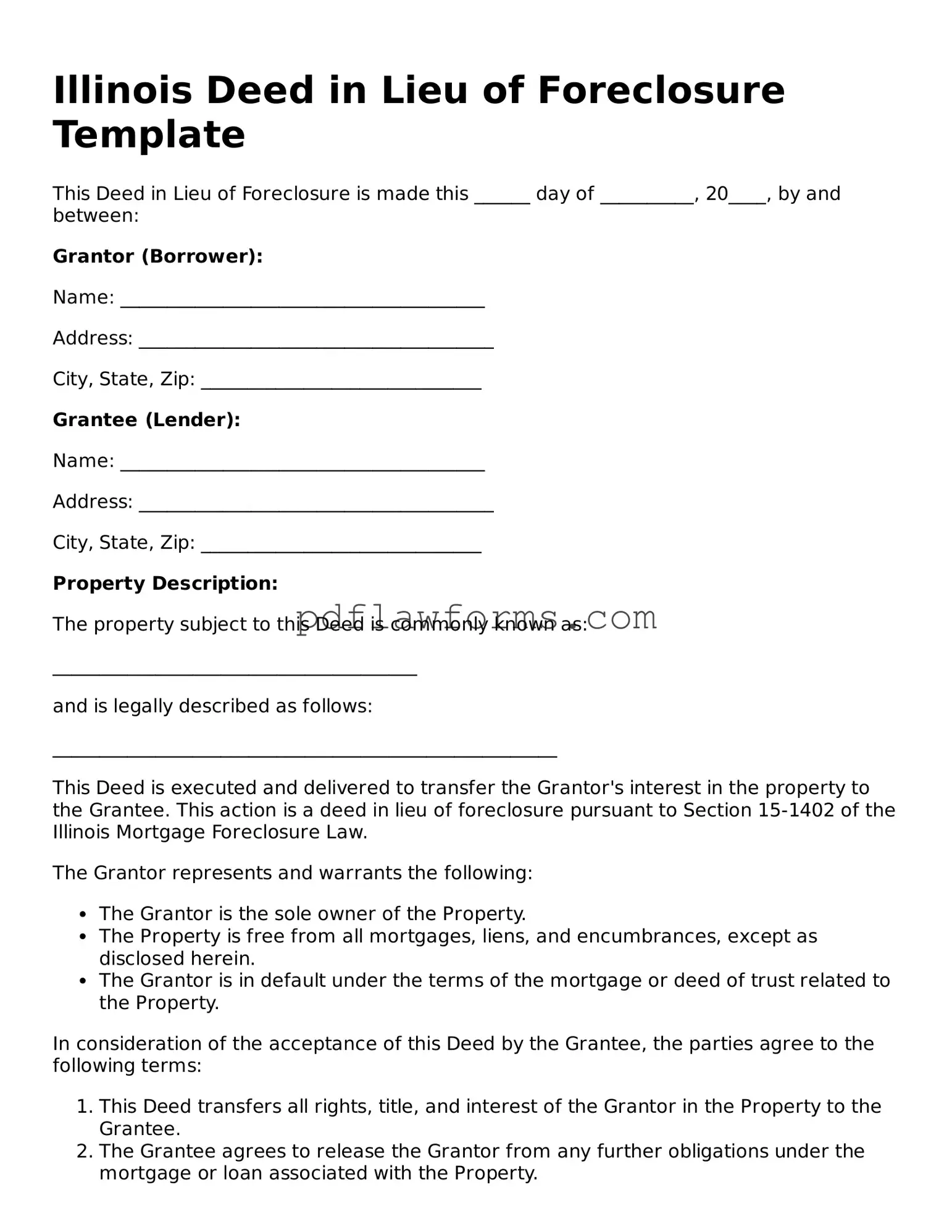Filling out the Illinois Deed form can seem straightforward, but many people make common mistakes that can lead to complications. One frequent error is not providing accurate property descriptions. The deed must include a precise legal description of the property, which is often found in previous deeds or property tax documents. Omitting or incorrectly describing the property can create confusion and potential legal issues down the line.
Another mistake involves the names of the parties involved. It’s essential to ensure that the names of both the grantor (the person transferring the property) and the grantee (the person receiving the property) are spelled correctly and match their legal documents. Any discrepancies can lead to disputes or even invalidate the deed.
Many individuals also forget to include the date of the transaction. While it may seem minor, the date is crucial for establishing the timeline of ownership. Without it, there could be uncertainty regarding when the transfer took place, which can complicate future legal matters.
Additionally, failing to sign the deed is a common oversight. Both the grantor and, in some cases, the grantee must sign the document for it to be legally binding. If the deed is not signed, it will not be recognized by the county recorder's office, rendering the transfer ineffective.
Another area where mistakes often occur is in the acknowledgment section. This part of the deed requires a notary public to witness the signatures. Some people neglect to have the document notarized, which can lead to issues when trying to record the deed. A notarized deed provides assurance that the signatures are authentic and that the parties acted voluntarily.
Inaccurate tax information can also cause problems. When filling out the deed form, it’s important to include the correct property tax identification number. This information helps local authorities track property ownership and ensure that taxes are assessed correctly. Missing or incorrect tax details can lead to delays in processing the deed.
Finally, many individuals overlook the importance of reviewing the entire deed before submission. Rushing through the process can lead to simple mistakes that may have significant consequences. Taking the time to double-check all information can prevent future headaches and ensure a smooth property transfer.
